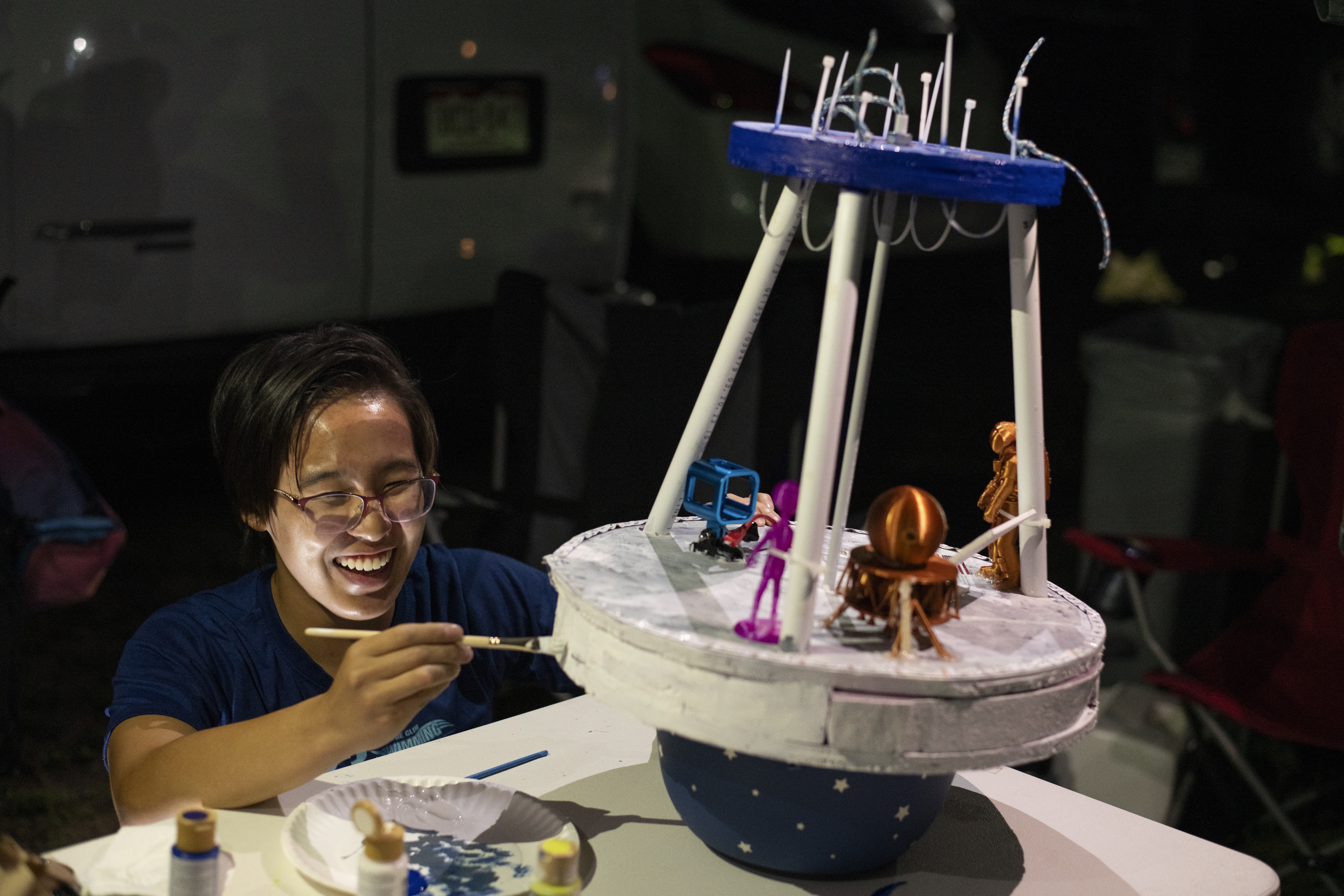The first day of school jitters these were not.
In two-plus decades of teaching, Tonya Saenz typically would greet the annual launch of another school year with the same nervous excitement of anticipation – a feeling of optimism blended with possibility.
But August 27, 2020 felt different.
Fear, uncertainty, even a tinge of self-doubt. These were Saenz’s emotions as the eager eyes of 29 second graders greeted her through her home computer monitor.
The weight of obligation felt heavy for Saenz. A self-described “mama bear” in her classroom, her role on this day, in this time, felt different and expanded. Her responsibilities to lead, perform, and engage were more heightened than ever.
You wouldn’t know it by observing her.
On display were her typical expressions of positivity and patience. The pit in her stomach felt just the opposite because the virtual environment was so out of her control.
“I remember calling Kari Wagner (fellow teacher and longtime friend) at the end of that first day, and we both just cried,” said Saenz, who has taught at Prairie Hills Elementary in Thornton since the school opened in 2003. “I said, ‘I don’t know if I can do this?’ So much happens on that first day. How can we be able to teach if we can’t hug them when they’re sad or need encouragement?”
____

That same morning about 10 blocks from Mrs. Saenz’s home, my 7-year-old needed definitive encouragement to get out of bed. Never a morning person, Adilene was more spry than normal yet remained tempered about the idea of remote learning.
“I can’t wait to actually go to school,” she told me, her head buried under the covers. “I don’t want school to be at home and looking at a computer.”
I empathized with that statement. Adilene had a front row seat to my life working from home and sitting through hundreds of hours of Zoom meetings and calls over the past six months.
Though, like any parent would, I tried to spin the situation toward optimism. I referenced a new year with a teacher, Mrs. Saenz, whom she had looked forward to being a student of (my son, now 13, also had Saenz in second grade, and she remains one of his favorite teachers). I was also quick to remind her of her new desk at home and school-issued Chromebook.
“It’s not the same as going to school, Dad,” Adilene said. “And you know it.”
My daughter is one of those kids who idolizes her teachers and runs an imaginary classroom in her free time. Our living room is stocked full of piles of homework packets, calendars, and booklets she makes for her students as she teaches them. It’s a serious operation with a consistent theme: Adilene only teaches her imaginary students in person.
Virtual learning, in particular for an introvert who doesn’t like a lot of eyes on her, was something she had been dreading.
At 8 a.m., Adilene logged on to her first official Zoom class and the journey began.
“Good morning, friends, welcome to second grade,” Saenz greeted her students.
For the next six weeks, Saenz, like thousands of teachers across the country, would build relationships in the vast social experiment of virtual learning. About three weeks in, she found herself in somewhat of a rhythm.
“It was amazing how we were able to build those connections virtually,“ she said. “I was surprised how well I got to know them over Zoom.”
During the first few weeks, Adilene and I worked next to each other at the kitchen table in case she needed technical guidance or learning support. It felt like a typical school day, lots of participation, silliness, reading, and arithmetic, along with the typical virtual challenges of classroom management around microphone and camera use.
There was a surplus of humorous moments, too. Early in the year, one of Adilene’s classmates wasn’t able to locate his homework packet. Saenz instructed him to ask his parents if they might know of its whereabouts. She recalled aloud that she had distributed the packet at back-to-school night.
“I would ask my dad, but he’s asleep on the couch,” the boy said, matter-of-factly. Adilene and I looked at each other and erupted in laughter.
Soon enough, she asked to transition to her bedroom because, in her words, she didn’t “need me anymore and wanted more privacy.”
Saenz, like most educators, encouraged independence in her students. Steadily, Adilene began to express her personality to her classmates. I would secretly stand outside of her room, listening to her engage in small group activities. I would hear her laughing, being herself, and it gave me comfort – and peace of mind – that more hopeful days were ahead.
On Sept. 28, Adilene and her classmates returned to school for in-person learning. It felt like the first day of school all over again, except better. Saenz said she had never been so happy because she knew her students would experience each other in a different way. Some students, like Adilene, had an instant boost of confidence from learning in person. The feeling lasted seven weeks.
On Friday, Nov. 13, Adilene and her schoolmates left Prairie Hills knowing they were going remote for an extended period of time as a COVID-19 precaution.
“When I had to break the news, I had two kids start to cry and about half of them just dropped their heads,” Saenz said. “They were heartbroken, and I got that anxiety again.”
The anxiety would subside, because Saenz and her students, now 16 of them (a number chose to stay fully remote for the year while others opted for home school) adapted yet again. They pushed through the finish line of the fall semester knowing that a return to in-person learning in January was the plan.
One of the highlights of our holiday break was Saenz dropping by for an impromptu visit and special delivery. She did this for every one of her students.
By mid-January, Adilene had metamorphosed into a miniature professional. She was writing notes on Post-Its, organizing downloaded files on her computer, and uploading homework assignments without supervision. One January day, we were finishing a lunch-time basketball game of horse in the driveway when she glanced at her watch.
“Hurry up and shoot because I have to be back on Zoom in three minutes,” she said.
On some days I barely saw her as she focused on her learning tasks and looked forward to a class reunion of sorts.
When the mid-year assessment season came, Saenz was admittedly nervous. Upon viewing the scores of her class, the students generally were performing right where she had hoped. She was shocked at the growth in their scores.
“These kids amaze me with how resilient and strong they are,” she said. “They’ve almost matured a little more than they needed to at 7- or 8-years-old. I think they’re proud of what they’ve accomplished.”
And they should be, as should Saenz. As a parent, I attribute my daughter’s socio-emotional and academic growth to Saenz and the other educators in her life.
As an educator, Saenz has acquired new skills for teaching that will endure for future lesson planning and delivery. Her fellow teachers collaborate more around innovative teaching and curriculum ideas than ever before in her career. She is part of a group chat of teachers who message each other around everything from teaching techniques to moral support and encouragement, especially on Mondays.
“All of these years I just thought of myself and my fellow teachers as doing our jobs,” Saenz said. “I never thought of us as leaders, but I guess we are.”
No guessing in this case. This is an absolute truth – on the first day of school, the last day, and every day in between.




